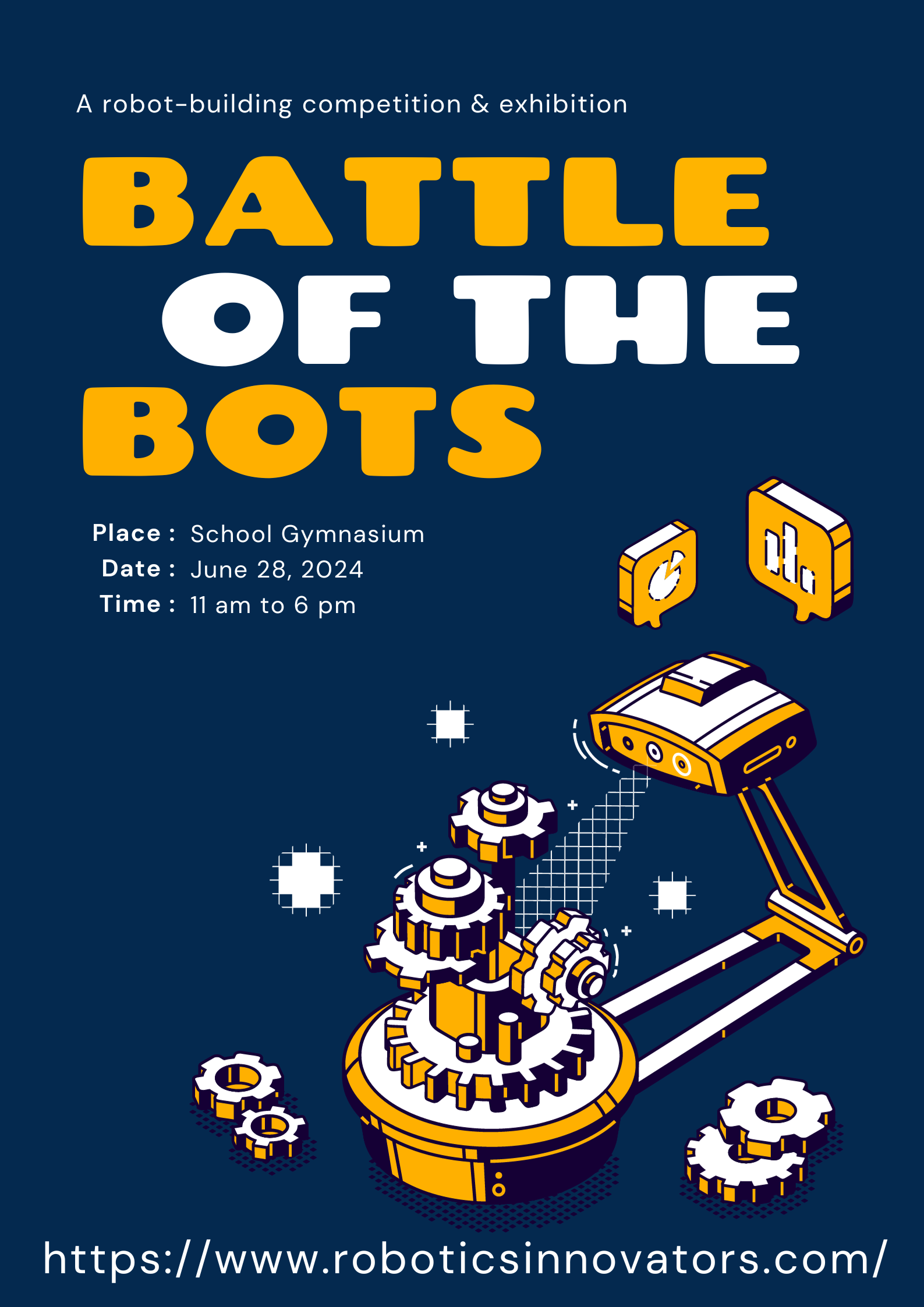In today's technologically advanced society, it is crucial for kids to acquire skills that will help them in the future. With its engaging fusion of science, engineering, and creativity, robotics for kids is an excellent chance to learn while having fun.
Participating in robotics projects not only piques their interest but also improves their capacity for problem-solving, critical thinking, and cooperation.
So these are some projects that are simple to make at home!
Introduction
Kids' robotics projects have advanced significantly from early mechanical toys. Children may now immerse themselves in interesting hands-on activities that foster their interest in STEM (science, technology, engineering, and mathematics) fields because of technological breakthroughs and the accessibility of user-friendly robotics kits.
These activities allow kids to investigate a variety of robotics topics, such as creating and programming robots, constructing circuits, comprehending sensors, and taking on practical problems. Kids may explore, make errors, and learn from them in a safe and engaging atmosphere, which encourages a growth attitude and feeds their innate curiosity.
Kids may learn technical skills through engaging and instructive robotics projects, but they can also cultivate a variety of transferrable talents. These include the ability to solve problems logically, think creatively, communicate effectively, work collaboratively, and persevere—all of which are essential for success in the twenty-first century.
Additionally, participating in robotics projects might inspire children to think about future professions in STEM subjects by igniting their interest for science and technology at a young age. Children are more likely to acquire a long-lasting interest in these areas when learning is fun and engaging, which creates the foundation for lifetime learning and inquiry.
So let's set off on a thrilling voyage into the fascinating world of entertaining and instructive robotics projects for kids, where learning is an adventure and creativity has no boundaries!
Giving children the skills they need to thrive in a society that is more automated in the digital era, where technology plays a significant role in our everyday lives, is essential. Robotics projects are a fun and exciting way to introduce youngsters to the ideas of science, technology, engineering, and mathematics (STEM), while also fostering their creativity and problem-solving abilities.
In this blog article, we will go through the various advantages of robotics projects for kids, focusing on how they foster lifelong interests in learning and the development of critical abilities.
Robotics projects provide children with hands-on learning experiences that go above and beyond what they would generally learn in a classroom. Children take an active role in their education.
This helps students think positively by improving their understanding of scientific concepts and logical reasoning. This hands-on method encourages better comprehension of complex ideas, making learning interesting and memorable.
Encourages Critical Thinking and Problem-Solving: Robotics projects put children's critical thinking and problem-solving skills to the test. As they encounter difficulties and setbacks during the building and programming phases, they learn to evaluate the circumstances, identify the problem, and come up with solutions.
This cycle of action cultivates adaptation, resilience, and the ability to solve problems quickly—a helpful mentality relevant to many facets of life.
Fosters ingenuity and innovation: Robotics projects provide children with a stage on which to showcase their creative ideas and ingenuity. Young minds are given the chance to experiment, discover, and express their original ideas.
This creative outlet encourages originality, unusual thinking, and a love of creation and innovation, all of which help youngsters improve their critical thinking abilities.
Fosters Teamwork and Collaboration: Robotics projects usually call for collaboration, offering youngsters the chance to hone vital teamwork abilities. Working on group projects helps kids realize the significance of clear communication, collaboration, and job delegation.
They are able to speak from experience when it comes to the benefits of cooperation, appreciate other points of view, and recognize the importance of group problem-solving—skills that are crucial for kids' creative projects as well as success in future academic and professional situations.
Children who work on robotics projects feel proud of their efforts and have a sense of success. This boosts their self-esteem and confidence. Students gain confidence in their ability to absorb and apply knowledge when they successfully build and program a robot.
Through trial and error, they learn that setbacks may be used as springboards for improvement, boosting their resiliency and sense of self. Thanks to robotics projects, a child's confidence can improve in many parts of their life.
Future Career Opportunities: Given how swiftly the area of robotics is developing, young children may benefit from exposure to robotics projects as a means of preparing them for future professions in child development. Children who have a solid foundation in STEM topics and practical robotics experience are better suited to pursue professions in engineering, programming, artificial intelligence, or robotics research.
In today's rapidly advancing technological society, it is imperative to provide children with the information and abilities necessary for future success. One field that has seen substantial growth is robotics, which integrates STEM concepts from science, technology, engineering, and mathematics.
In order to expose youngsters to the fascinating topic of robotics, a variety of robotics kits made specifically for young minds have been produced. These kits provide hands-on learning experiences that foster creativity, problem-solving abilities, and a full comprehension of the principles of robotics.
In this blog article, we'll explore the world of kids' robotics kits and look at their benefits.
In the realm of robotics kits, LEGO Mindstorms is a well-known brand. Children may use LEGO bricks to create and program their own robots with Mindstorms. Motors, sensors, and a programmable block that acts as the robot's brain are all included in the package.
Kids can program their robots to do a variety of things, including follow lines, navigate mazes, or even play soccer, using an intuitive interface. LEGO Mindstorms' versatility enables kids to express their imagination and experiment with various robot designs.
Lego robotics for children is a fun and simple method to get your child interested in robotics.
VEX Robotics: VEX Robotics offers a wide selection of robotics kits appropriate for people of all ages. These kid-friendly robotics kits include
The kits also include simple software that lets students utilize a block-based coding language to program their robots. Through contests and challenges, VEX Robotics offers youngsters an organized learning environment where engineering concepts are taught and collaboration is fostered.
Makeblock mBot: Makeblock mBot is an easy-to-use robotics kit that teaches kids the fundamentals of electronics and programming. The kit includes a number of pieces that may be put together to create a robot automobile.
Kids may direct the mBot's motions, LED lights, and sensors using a graphical programming interface. Makeblock mBot is designed to pique kids' interest in robotics and act as a launching pad for more challenging projects. The kit is a great option for young enthusiasts because of its low cost and ease of use.
Ozobot: A little robot that offers a distinctive and engaging learning environment is called Ozobot. Ozobot can follow directions, follow lines, and react to color codes written on paper, despite its small size.
By making precise patterns and sequences in their drawings, kids may direct the robot's actions. With the help of Ozobot, children may express themselves while learning about programming ideas. A variety of educational games and challenges are also included in the package to keep kids' attention.
Sphero: Sphero provides a selection of programmable robotic balls that inspire imagination and experimentation. Using a coding program on a smartphone or tablet, these robust robots may be managed.
Children may control the robot's motions, modify its appearance, and even design original games. As youngsters build and implement their ideas for Sphero robots, they develop analytical thinking and problem-solving abilities. In order to support learning, the organization also offers a wide range of tools, such as challenges and instructional content.
In today's technologically sophisticated world, children have access to a wide range of toys that not only keep them amused but also pique their curiosity and imagination. Robotic toys are among these cutting-edge toys that have gained enormous popularity.
These intriguing items, such as kid-friendly robotics programs, give youngsters an enjoyable educational experience while fusing play and robotics components. This blog post will examine the numerous robotic toys that are accessible to children, each of which has unique qualities and benefits.
Children may learn the fundamentals of coding and programming with the help of programmable robots in a fun and interesting way. These robots usually include user-friendly interfaces that enable students to create simple instructions or sequences that the robot will follow.
Programmable robots may help kids have a great time while developing their creativity, logical thinking, and problem-solving skills.
Robots that can be operated remotely provide kids with the joy of controlling and guiding their own robot. Kids may program the robot to walk, dance, or do certain activities by using a portable controller or smartphone application to control its motions.
When playing with this kind of robotic toy, which encourages coordination, dexterity, and imaginative play, kids may conjure up thrilling situations and adventures.
Robotic art projects provide students the chance to investigate the relationship between robotics and creative expression, making them a fascinating art activity for kids. Using materials like motors, sensors, and paintbrushes, kids can create robots that produce unique, abstract art. This program encourages cross-disciplinary creativity and unleashes the imagination of the pupils.
Conclusion
Learning, creativity, and personal development opportunities are endless when kids are involved in entertaining and instructive robotics projects. Kids gain a variety of skills through building and programming robots, including problem-solving, critical thinking, programming logic, and cooperation.In addition to offering a practical and engaging learning environment, these projects encourage a love of STEM fields. Encourage your children to explore the fascinating world of robotics so that you may observe as they realize their potential and grow into the future's innovators and creators.
For youngsters, BrightChamps offers a selection of online robotics lessons that are appropriate for a range of ages and ability levels. They provide an introduction to robot design, programming, and control in their robotics course, which is intended for novices.








.jpg)





